
Discover the Enchanting Isle of Man
Experience the magic of the Isle of Man: a haven of natural beauty, rich history, and thrilling adventures in the heart of the Irish Sea.
Nestled in the Irish Sea, the Isle of Man is a captivating blend of natural beauty, rich history, and unique culture. This self-governing British Crown Dependency offers a diverse landscape, from rolling hills and rugged coastlines to charming villages and historic landmarks. Explore the island's Viking heritage at the Manx Museum or take a journey back in time with a visit to the medieval Castle Rushen. For nature lovers, the island boasts stunning scenery, including the scenic Snaefell Mountain Railway, where you can enjoy panoramic views of England, Scotland, Wales, and Ireland on a clear day. Adventure seekers will find plenty to do, from hiking and cycling to water sports like kayaking and sailing. The Isle of Man is also famous for the annual TT (Tourist Trophy) motorcycle races, attracting visitors from all over the world. With its friendly locals, quaint tea rooms, and traditional pubs, you'll feel right at home as you explore this magical island.
Local tips in Isle of Man
- Visit during the TT races in late May and early June for an unforgettable experience.
- Take time to explore the island's heritage railways for a scenic and nostalgic journey.
- Pack layers and waterproofs; the weather can be quite changeable.
- Don't miss out on the local seafood, especially the famous Manx kippers.
- Consider renting a car or a bike to explore the island at your own pace.
Discover the Enchanting Isle of Man
Nestled in the Irish Sea, the Isle of Man is a captivating blend of natural beauty, rich history, and unique culture. This self-governing British Crown Dependency offers a diverse landscape, from rolling hills and rugged coastlines to charming villages and historic landmarks. Explore the island's Viking heritage at the Manx Museum or take a journey back in time with a visit to the medieval Castle Rushen. For nature lovers, the island boasts stunning scenery, including the scenic Snaefell Mountain Railway, where you can enjoy panoramic views of England, Scotland, Wales, and Ireland on a clear day. Adventure seekers will find plenty to do, from hiking and cycling to water sports like kayaking and sailing. The Isle of Man is also famous for the annual TT (Tourist Trophy) motorcycle races, attracting visitors from all over the world. With its friendly locals, quaint tea rooms, and traditional pubs, you'll feel right at home as you explore this magical island.
When is the best time to go to Isle of Man?
Iconic landmarks you can’t miss
Peel Castle
Explore Peel Castle, an iconic historical fortress on the Isle of Man, offering stunning coastal views and a rich tapestry of history.

The Manx Museum
Explore the Isle of Man's history and culture at The Manx Museum, a captivating journey through time in Douglas.

Castle Rushen
Explore the rich heritage of the Isle of Man at Castle Rushen, a historic castle showcasing medieval architecture and captivating exhibits.

The Great Laxey Wheel
Explore the Great Laxey Wheel, the world's largest working waterwheel, and immerse yourself in the Isle of Man's rich industrial heritage amidst stunning landscapes.

House of Manannan
Discover the captivating history and folklore of the Isle of Man at the House of Manannan, a must-visit museum in Peel.

Isle of Man Motor Museum
Explore the Isle of Man Motor Museum: a captivating journey through automotive history with over 400 stunning vehicles.

Villa Marina
Discover the vibrant music scene at Villa Marina, a historic concert hall and events venue in Douglas, Isle of Man, offering diverse performances year-round.

Curraghs Wildlife Park
Explore the stunning Curraghs Wildlife Park in Isle of Man, where wildlife conservation meets family fun amidst beautiful natural landscapes.

Milntown Estate and Gardens
Explore the historic Milntown Estate and Gardens, a stunning blend of nature, heritage, and relaxation in the Isle of Man.

Point of Ayre Lighthouse
Explore the historic Point of Ayre Lighthouse on the Isle of Man, where stunning coastal views and rich maritime history await.

Isle of Man Railway - Castletown Station
Explore the historic Isle of Man Railway at Castletown Station, a charming tourist attraction offering scenic steam train journeys and a glimpse into railway heritage.
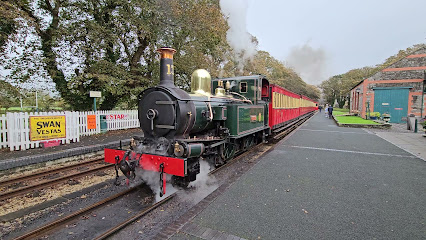
Tynwald Hill
Explore Tynwald Hill, the historic site of the Isle of Man's parliament, and delve into a thousand years of democratic tradition amidst stunning landscapes.
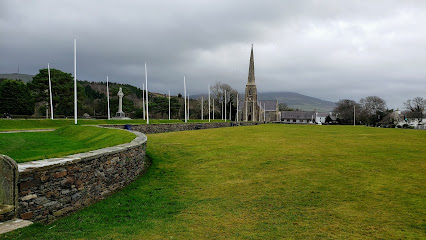
Manx Fun Farm
Discover a world of fun and adventure at Manx Fun Farm, the ultimate family recreation center on the Isle of Man.

Douglas Promenade Gardens
Discover the tranquil beauty of Douglas Promenade Gardens, a serene escape on the Isle of Man's stunning coastline, perfect for relaxation and exploration.

Milner's Tower
Explore Milner's Tower on the Isle of Man, where history meets breathtaking coastal views, perfect for nature lovers and adventurers alike.
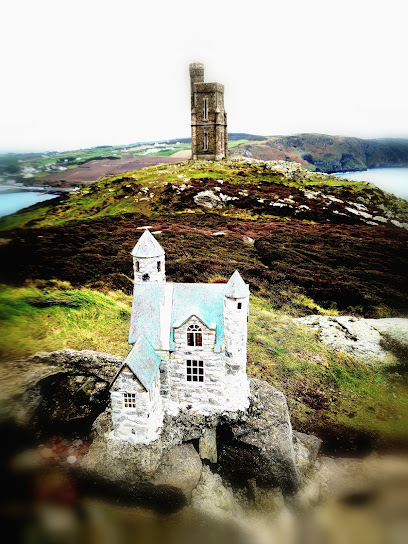
Unmissable attractions to see
The Manx Museum
Explore the captivating history and culture of the Isle of Man at The Manx Museum, home to rich exhibits and interactive displays.

The Great Laxey Wheel
Explore the Great Laxey Wheel, an iconic symbol of the Isle of Man's industrial heritage, offering stunning views and historical insights.

House of Manannan
Explore the House of Manannan, a captivating museum in Peel, Isle of Man, where maritime history and folklore come alive through interactive exhibits and stunning displays.

Isle of Man Motor Museum
Discover the Isle of Man's rich automotive history at the Isle of Man Motor Museum, featuring over 400 vehicles and engaging exhibits for all ages.

Curraghs Wildlife Park
Explore Curraghs Wildlife Park: A premier wildlife sanctuary on the Isle of Man, offering an unforgettable journey through nature and wildlife.

Manx Electric Railway - Derby Castle Station
Discover the historic Manx Electric Railway at Derby Castle Station, where scenic rides and rich heritage meet on the stunning Isle of Man.

Murray's Motorcycle Museum
Discover the legacy of motorcycling at Murray's Motorcycle Museum on the Isle of Man, showcasing over 200 iconic motorcycles and the island's rich biking history.

The Bungalow
Discover the rich history and breathtaking views at The Bungalow, a must-visit tourist attraction on the Isle of Man.

Glen Helen
Experience the stunning landscapes and tranquil trails of Glen Helen, a national forest gem in the Isle of Man perfect for hiking and nature exploration.

Laxey Beach
Discover the beauty of Laxey Beach, a serene coastal gem on the Isle of Man, offering stunning views and rich local heritage.

Milntown Estate and Gardens
Discover the serene beauty and rich history of Milntown Estate and Gardens on the Isle of Man, where nature and heritage unite.

Peel Beach
Explore Peel Beach on the Isle of Man – a stunning coastal escape with golden sands, water sports, and rich local culture.

Home of Rest for Old Horses
Discover the tranquil charm of the Home of Rest for Old Horses, a sanctuary dedicated to caring for retired equines on the stunning Isle of Man.

Point of Ayre Lighthouse
Explore the historic Point of Ayre Lighthouse on the Isle of Man, where stunning coastal views meet rich maritime history.

Mooragh Lake Park
Discover the enchanting beauty of Mooragh Lake Park, a serene escape in Ramsey, Isle of Man, perfect for relaxation and outdoor fun.
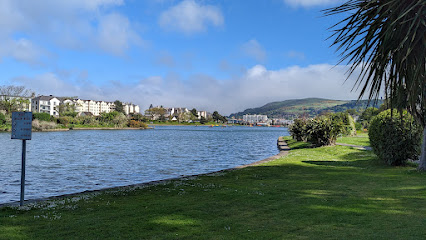
Essential places to dine
The Sound Cafe Isle of Man
Experience delightful dining at The Sound Cafe in Port Erin, where local flavors meet stunning coastal views.

Jak's Bar & Smokehouse
Experience delicious grilled cuisine at Jak's Bar & Smokehouse on the scenic Loch Promenade in Douglas, Isle of Man.

Little Fish Cafe
Experience fresh seafood delights at Little Fish Cafe in Douglas - your perfect dining destination on the Isle of Man.

Thai Thai Restaurant
Savor authentic Thai flavors at Thai Thai Restaurant in Douglas – where tradition meets innovation in every dish.

The Forge
Experience exquisite local flavors at The Forge in Mount Murray, Isle of Man – where every meal tells a story.

The Horse & Plough
Experience the charm of The Horse & Plough - your perfect pub escape on the Isle of Man with delicious food and friendly vibes.

The Boatyard Restaurant
Experience exquisite seafood dining at The Boatyard Restaurant in Peel, Isle of Man - where fresh flavors meet stunning harbor views.

Harbour Lights Café & Restaurant
Experience delightful dining at Harbour Lights Café & Restaurant in Peel, Isle of Man—where local flavors meet stunning seaside views.

Ballacregga Corn Mill Tea Room & Restaurant
Experience delightful homemade meals in a historic setting at Ballacregga Corn Mill Tea Room & Restaurant in Laxey.

La Mona Lisa
Experience authentic Italian dining at La Mona Lisa in Laxey, Isle of Man - where every meal is crafted with love and tradition.
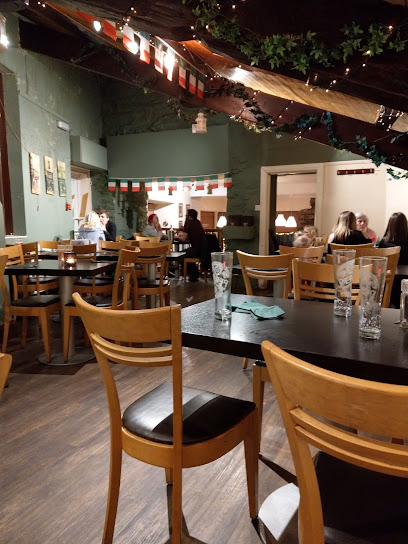
Talk Of The Town
Discover delightful dining at Talk Of The Town in Douglas – where local flavors meet warm hospitality amidst beautiful Nobles Park.

14 North Restaurant
Experience fine dining at 14 North Restaurant in Douglas, Isle of Man—where local flavors meet culinary artistry.

AURA BAR & BISTRO
Discover exceptional Indian cuisine at AURA BAR & BISTRO in Douglas, Isle of Man - where tradition meets modern flair.

Leonardo's Restaurant
Experience the taste of Italy at Leonardo's Restaurant in Castletown – where every meal is a celebration of authentic flavors.

The Fig & Olive
Discover the vibrant flavors of Mediterranean cuisine at The Fig & Olive in Douglas - where every meal is a celebration of taste.

Markets, malls and hidden boutiques
Tynwald Mills
Explore Tynwald Mills: A unique shopping destination on the Isle of Man featuring gifts, cafes, and local treasures for every visitor.

The Strand Shopping Centre
Discover a vibrant shopping experience at The Strand Shopping Centre in Douglas, Isle of Man, where variety meets convenience for every visitor.
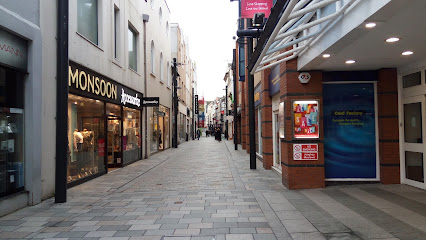
Peacocks
Explore Peacocks in Douglas for trendy fashion finds at affordable prices, perfect for every member of the family.

The Creative Shop
Explore the charm of The Creative Shop in Douglas, Isle of Man, where unique gifts and local arts come together in a delightful shopping experience.

Extreme Art & Gadgets
Discover unique souvenirs and quirky gadgets at Extreme Art & Gadgets, a creative gift shop in Douglas, Isle of Man.

Trend Gift Shop Port Erin.
Explore Trend Gift Shop Port Erin for unique candles and jewelry, capturing the essence of the Isle of Man in every handcrafted piece.

Mostly Manx
Discover unique Isle of Man gifts at Mostly Manx, where local craftsmanship meets island culture in the heart of Douglas.

The Old Bonded Warehouse
Explore a treasure trove of history at The Old Bonded Warehouse, an enchanting antique shop in Peel, Isle of Man, featuring unique artifacts and collectibles.

Mother T's
Explore the enchanting Mother T's Gift Shop in Laxey, Isle of Man, and uncover unique treasures that capture the island's magic.
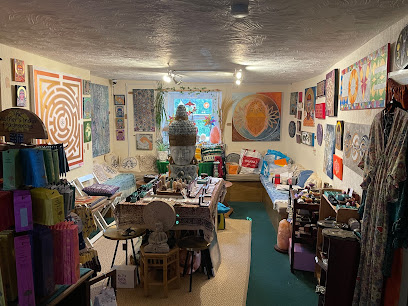
Noel's Emporium
Explore Noel's Emporium in Douglas for unique second-hand furniture and individualistic home decor treasures.

Fortuna Antiques IOM
Explore Fortuna Antiques IOM in Douglas, Isle of Man – a treasure trove of history and charm with unique antiques waiting for you.

Presence of Mann
Explore Presence of Mann in Laxey, where unique gifts and local literature celebrate the heritage of the Isle of Man.
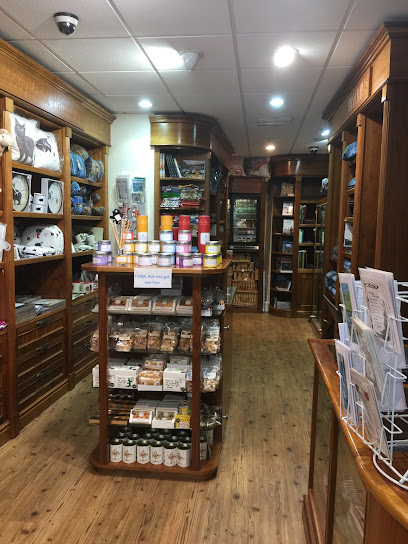
Trading Places (IOM) Ltd
Explore the charm of Laxey with unique finds at Trading Places (IOM) Ltd, where every piece has a story waiting to be discovered.

Whim Boutique
Discover unique fashion at Whim Boutique in Laxey, Isle of Man, where style meets local charm in a delightful shopping experience.

LS Boutique
Explore stylish ladies' clothing at LS Boutique in Kirk Michael, Isle of Man - a hidden gem for fashion enthusiasts.

Essential bars & hidden hideouts
Jak's Bar & Smokehouse
Discover the flavors of the Isle of Man at Jak's Bar & Smokehouse, where exceptional grill cuisine meets a vibrant atmosphere.

1886 Bar & Grill
Discover the lively 1886 Bar & Grill in Douglas, Isle of Man - a perfect blend of great food, cocktails, and live entertainment for an unforgettable night out.

The Terminus Tavern
Experience the charm of The Terminus Tavern, a cozy pub in Douglas, Isle of Man, perfect for enjoying local ales and delicious food.

British Hotel
Discover the charm of the British Hotel, a delightful pub in Douglas, Isle of Man, offering a warm atmosphere, great drinks, and local cuisine.

Rovers Return
Discover the charm of Rovers Return, a lively pub in Douglas, Isle of Man, offering local brews, hearty meals, and a warm atmosphere.

The Cat With No Tail
Experience local charm at The Cat With No Tail, a cozy pub in Douglas, Isle of Man, offering delightful food and a wide selection of drinks.

The Original Quids Inn
Discover the ultimate live music and karaoke experience at The Original Quids Inn in Douglas, Isle of Man - where fun and entertainment meet!

Thirsty Pigeon
Discover the vibrant atmosphere at Thirsty Pigeon, a premier pub in Douglas, Isle of Man, known for its local ales and hearty meals.

Oscar's
Experience the vibrant atmosphere and diverse menu at Oscar's, a top bar and restaurant in Douglas, Isle of Man, perfect for tourists and locals alike.

The Railway Inn
Experience authentic Isle of Man hospitality at The Railway Inn, a charming pub on North Quay, Douglas, offering delicious food and stunning harbor views.
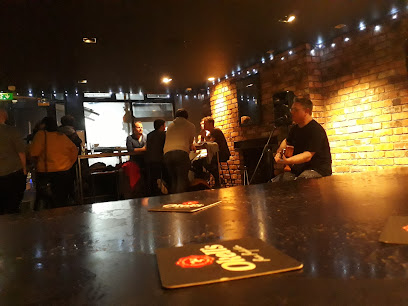
Archibald Knox
Experience the warm hospitality and local charm of Archibald Knox, a popular pub in Onchan, Isle of Man, perfect for refreshing drinks and community vibes.
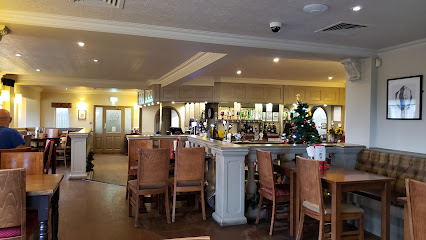
The Prospect
Discover the vibrant atmosphere and delicious offerings at The Prospect, a top pub and restaurant in Douglas, Isle of Man.

The Front Porch
Discover the charm of The Front Porch, a cozy bar in Douglas offering a delightful selection of drinks and a lively atmosphere.

Sir Norman's Bar
Discover Sir Norman's Bar on the Isle of Man: A vibrant fusion of fine dining, live music, and unforgettable atmosphere along the beautiful Harris Promenade.

Bar George
Discover Bar George, Douglas' premier wine bar and restaurant, offering a fine selection of wines and gourmet dishes in an elegant setting.

Local Phrases about Isle of Man
-
- HelloKiaull
[kee-owl] - GoodbyeSlane
[slaan-eh] - YesJee
[jee] - NoCha
[kaa] - Please/You're welcomeCur
[koor] - Thank youGura mie ayd
[goo-rah mee ayd] - Excuse me/SorryJeeagh beg
[jee-ahg beg] - How are you?Conaerie shiu?
[kun-air-ee shee-oo] - Fine. And you?Traa dy liooar. As shiu?
[trah dee lee-oar. ass shee-oo] - Do you speak English?Gow jannoo shiu Gaelg?
[gow yan-oo shee gale-g] - I don't understandCha jean mee meeinagh
[kaa jen mee may-nakh]
- HelloKiaull
-
- I'd like to see the menu, pleaseTa graih dou gynsagh y chooish, cur
[ta gree doo ginn-sakh ee khoo-ish, koor] - I don't eat meatCha nel oo ag ee ag arran
[kaa nel oo egg ee egg arr-an] - Cheers!Slaynt
[slan-t] - I would like to pay, pleaseTa graih dou lhiggey, cur
[ta gree doo lee-gee, koor]
- I'd like to see the menu, pleaseTa graih dou gynsagh y chooish, cur
-
- Help!Cooney
[koo-nee] - Go away!Gow dys
[gow diss] - Call the Police!Cur y Polis!
[koor ee pol-iss] - Call a doctor!Cur dorrys!
[koor dor-iss] - I'm lostTa mee gollrish
[ta mee gol-lish] - I'm illTa mee choraa
[ta mee khor-aa]
- Help!Cooney
-
- I'd like to buy...Ta graih dou kianal...
[ta gree doo kee-an-al] - I'm just lookingTa mee gollrish
[ta mee gol-lish] - How much is it?Cre va'n costys?
[kree van kost-iss] - That's too expensiveTa shen ro choraa
[ta shen roh khor-aa] - Can you lower the price?Vel shiu kione y prys?
[vel shee kee-on-eh ee prise]
- I'd like to buy...Ta graih dou kianal...
-
- What time is it?Cre'n traa t'ayn?
[kree-n trah tane] - It's one o'clockT'eh jees yn oor
[tay jees un oor] - Half past (10)Jeih mygeayrt (10)
[jay migg-ayrt (10)] - MorningYn traa
[un trah] - AfternoonAghin traa
[ah-gin trah] - EveningOie
[oy] - YesterdayYnjerin
[un-jer-in] - TodayJiu
[yoo] - TomorrowYindyssagh
[in-diss-akh] - 1Un
[oon] - 2Jiass
[jee-ass] - 3Tree
[tree] - 4Kiare
[kee-ar-eh] - 5Queig
[keg] - 6Shey
[shay] - 7Shiaght
[shee-akt] - 8Hoght
[hokt] - 9Nuy
[noo-ee] - 10Jeih
[jay]
- What time is it?Cre'n traa t'ayn?
-
- Where's a/the...?Jeish fer...
[jaysh fer] - What's the address?Cre t'ad dy eiraght?
[kree tad duh air-akt] - Can you show me (on the map)?Vel shiu er-y-faagail mee (ayn y cardle)?
[vel shee air-ee-fah-gil mee (un ee kar-dul)] - When's the next (bus)?Quoi'n traa t'ayn y jeir (bee-ei)?
[kwain trah tane ee jer (bee-ay)] - A ticket (to ....)Boght (jeig ...)
[bohkt (jayg ...)]
- Where's a/the...?Jeish fer...
History of Isle of Man
-
The Isle of Man, nestled in the Irish Sea, has been inhabited since the Mesolithic period. The island's early inhabitants left behind fascinating artifacts, including the Neolithic chambered tombs at Meayll Hill. The arrival of Celts around 500 BCE brought significant cultural influences, evident in the island's language, Manx Gaelic, which has its roots in Old Irish.
-
The Isle of Man experienced considerable change starting in the 8th century with the arrival of the Vikings. By the 9th century, the island became part of the Norse Kingdom of the Isles. The most notable ruler was King Magnus Barefoot, who declared himself King of Mann and the Isles. The Tynwald, one of the oldest continuous parliaments in the world, was established during this period and still meets annually at Tynwald Hill.
-
The Treaty of Perth in 1266 transferred control of the Isle of Man from Norway to Scotland. However, the island's strategic location led to ongoing conflicts between Scotland and England. By 1399, the island came under the control of the English Crown. The Stanley family, who became Lords of Mann, ruled the island until the 18th century, leaving behind significant landmarks such as Castle Rushen.
-
The Industrial Revolution brought about significant economic changes to the Isle of Man. The island became a popular tourist destination for Victorian holidaymakers, particularly from the northern industrial towns of England. This period saw the construction of the Manx Electric Railway and the Snaefell Mountain Railway, which are still in operation today and offer scenic views of the island.
-
During both World Wars, the Isle of Man played a unique role, with internment camps established for enemy aliens. The most notable was Knockaloe Camp during World War I, which housed over 20,000 internees. Post-war, the island continued to develop its self-governing status and modernized its economy, focusing on financial services and tourism.
-
Today, the Isle of Man is renowned for its blend of rich history and modern innovation. It maintains its unique cultural identity through events like the annual Manx TT motorcycle races and the continued use of the Manx language. The island is also a leader in digital industries and finance, balancing its historical heritage with a forward-thinking approach to its economy.
Isle of Man Essentials
-
The Isle of Man is accessible by both air and sea. The main airport is the Isle of Man Airport (Ronaldsway), located near Castletown, with regular flights from several UK cities including London, Manchester, and Liverpool. There are also seasonal flights from Dublin and other European locations. For those preferring sea travel, the Isle of Man Steam Packet Company operates ferries from Liverpool, Heysham, Belfast, and Dublin to Douglas, the capital.
-
Once on the island, transportation options include buses, taxis, car rentals, and the Isle of Man's unique heritage railways. Buses operated by Bus Vannin cover most parts of the island. Taxis are available but can be more expensive. For a nostalgic experience, consider traveling on the steam railway, electric railway, or the Snaefell Mountain Railway. Car rentals are available at the airport and in Douglas, providing flexibility to explore at your own pace.
-
The official currency is the Manx pound (IMP), which is at par with the British pound (GBP). Both currencies are accepted on the island. Credit and debit cards are widely accepted, but it's a good idea to carry some cash for smaller establishments and rural areas. ATMs are available in major towns, and currency exchange services can be found at the airport and in banks.
-
The Isle of Man is generally very safe with low crime rates. However, standard precautions should be taken, such as not leaving valuables unattended and being cautious in less populated areas at night. There are no specific high-crime areas targeting tourists, but always stay vigilant and aware of your surroundings.
-
In case of an emergency, dial 999 or 112 to reach police, fire, or medical services. The main hospital is Nobles Hospital located in Douglas, which provides comprehensive medical care. Pharmacies are available in major towns for minor health issues. It is advisable to have travel insurance that covers medical emergencies.
-
Fashion: Do dress comfortably and appropriately for the weather, which can be unpredictable. Layering is advisable. Avoid overly casual or revealing clothing when visiting religious sites. Religion: Do respect local customs, especially in places of worship. Public Transport: Do be respectful and considerate to other passengers. Don't eat or drink on buses. Greetings: Do greet people with a friendly 'hello' or 'hi'. A handshake is common in more formal settings. Eating & Drinking: Do try local specialties such as Manx kippers and Queenies. Don't refuse hospitality, as it can be considered impolite.
-
To experience the Isle of Man like a local, visit the local pubs where you can enjoy traditional music and mingle with residents. Attend the annual TT (Tourist Trophy) races if visiting in late May or early June, which is a significant event on the island. Explore the stunning coastal walks and historical sites like Castle Rushen and the Laxey Wheel. Engage with locals, as they are often friendly and willing to share stories and tips about the island.
Trending Landmarks in Isle of Man
-
Peel Castle
-
The Manx Museum
-
Castle Rushen
-
The Great Laxey Wheel
-
House of Manannan
-
Isle of Man Motor Museum
-
Villa Marina
-
Curraghs Wildlife Park
-
Milntown Estate and Gardens
-
Point of Ayre Lighthouse
-
Isle of Man Railway - Castletown Station
-
Tynwald Hill
-
Manx Fun Farm
-
Douglas Promenade Gardens
-
Milner's Tower
Nearby Cities to Isle of Man
-
Things To Do in Onchan
-
Things To Do in Laxey
-
Things To Do in Peel
-
Things To Do in Douglas
-
Things To Do in Ramsey
-
Things To Do in Ballasalla
-
Things To Do in Castletown
-
Things To Do in Port Erin
-
Things To Do in Port St Mary
-
Things To Do in Belfast
-
Things To Do in Drogheda
-
Things To Do in Liverpool
-
Things To Do in Dublin
-
Things To Do in Bray
-
Things To Do in Chester













